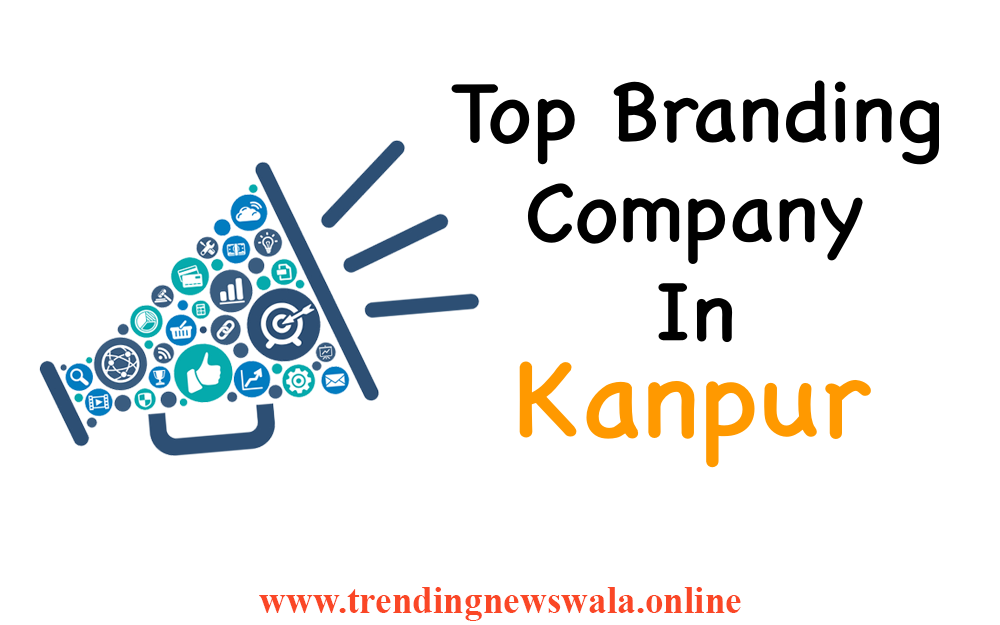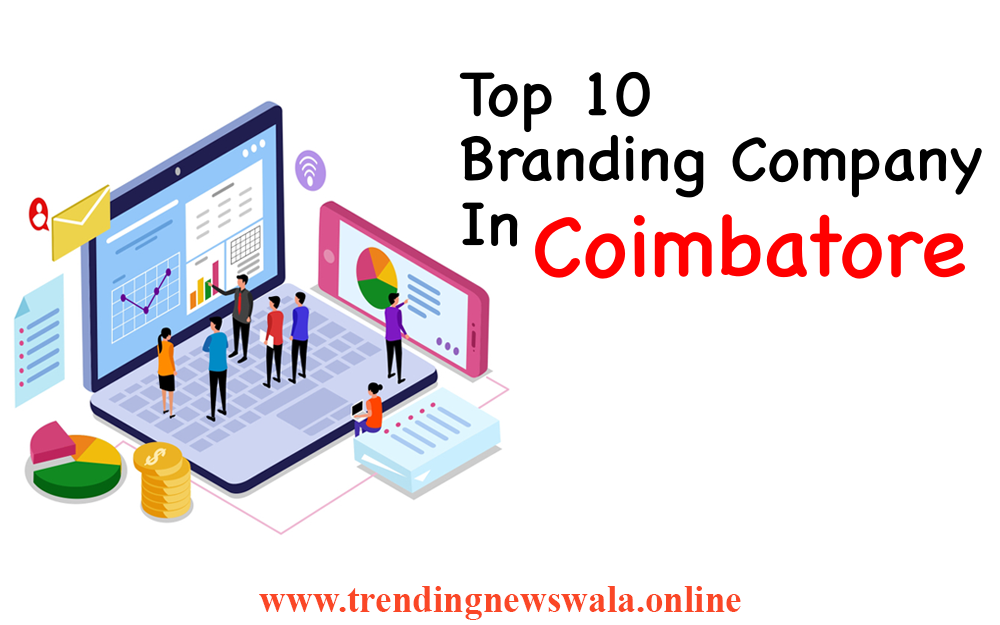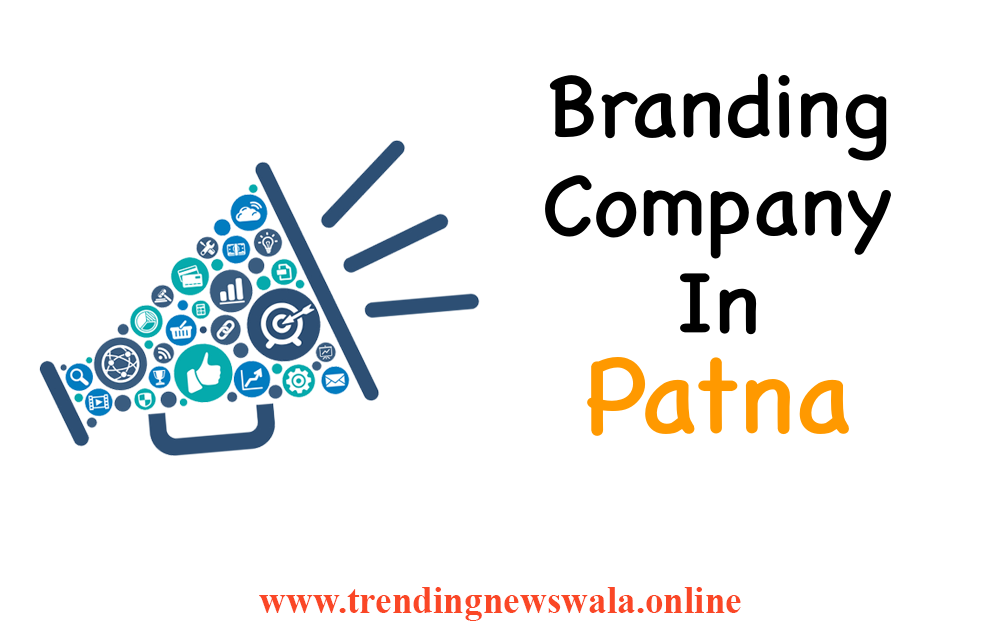How Digital Marketing helps in Business
Digital marketing plays a crucial role in helping businesses reach and engage their target audience in the online space. Here are several ways in which digital marketing contributes to the success of a business
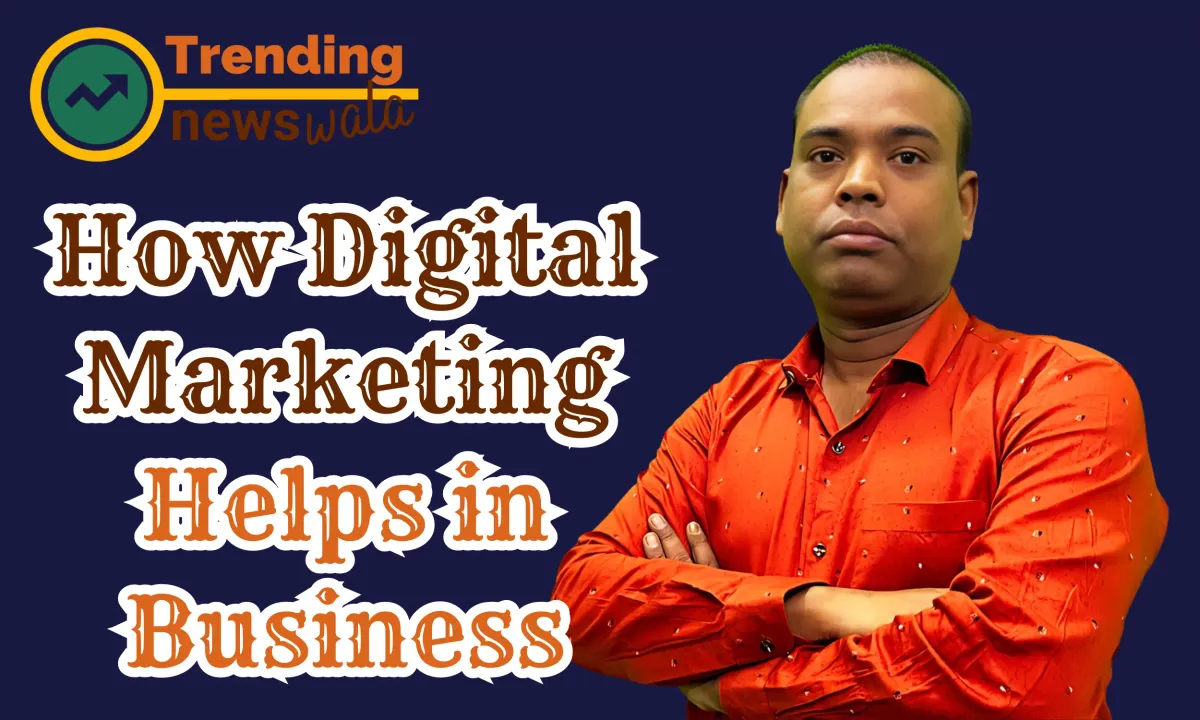
Digital marketing refers to the use of digital channels, such as search engines, social media, email, and websites, to promote a product or service. The goal of digital marketing is to reach a target audience and convert them into customers. Some common digital marketing tactics include search engine optimization (SEO), pay-per-click (PPC) advertising, content marketing, influencer marketing, and email marketing. Digital marketing company in Mumbai allows for more targeted and measurable marketing efforts compared to traditional marketing methods.
Digital marketing plays a crucial role in helping businesses reach and engage their target audience in the online space. Here are several ways in which digital marketing contributes to the success of a business:
Increased Visibility and Reach
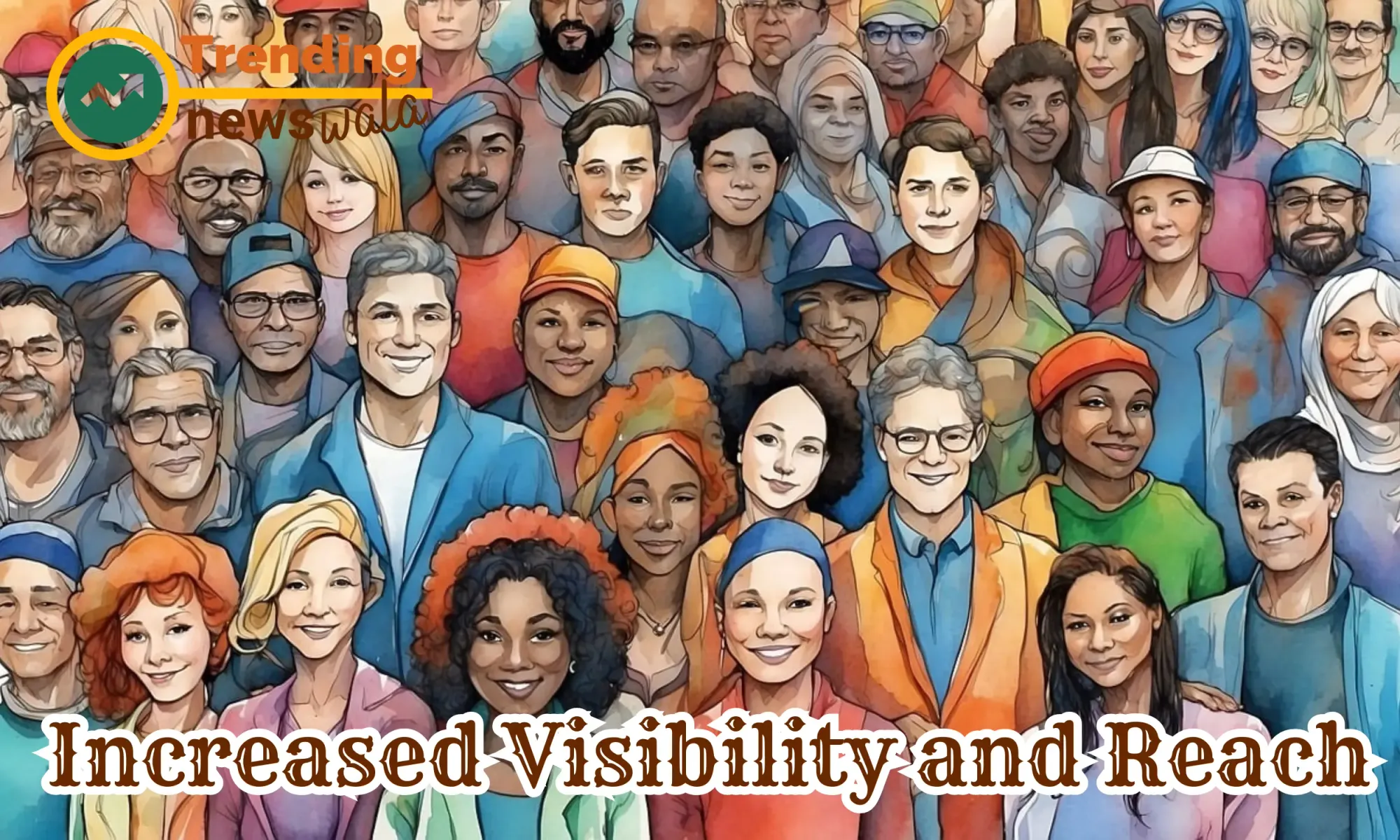
Increased visibility and reach in the context of digital marketing refer to the ability of a business or brand to be more easily discovered and recognized by its target audience in the online space. This visibility is crucial for attracting potential customers and engaging with the existing ones. Here's how digital marketing contributes to increased visibility and reach:
- Search Engine Optimization (SEO): SEO involves optimizing a website's content, structure, and other elements to improve its ranking on search engine results pages (SERPs). Higher rankings mean increased visibility when users search for relevant keywords related to the business. This is essential for driving organic (non-paid) traffic.
- Content Marketing: Creating high-quality, relevant, and valuable content helps businesses establish themselves as authorities in their industry. Content marketing can include blog posts, articles, videos, infographics, and more. When users find and engage with this content, it enhances the visibility of the brand.
- Social Media Marketing: Social media platforms provide businesses with an opportunity to connect with a vast and diverse audience. By regularly sharing content, engaging with followers, and leveraging social media advertising, businesses can significantly increase their visibility and reach. Social media shares also contribute to organic visibility.
- Email Marketing: Email marketing allows businesses to directly communicate with their audience. By sending targeted and relevant emails, businesses can keep their brand in the minds of their subscribers, driving engagement and repeat business.
- Paid Advertising: Platforms like Google Ads, Facebook Ads, and other social media advertising channels enable businesses to target specific demographics, interests, and behaviors. Paid advertising can quickly increase visibility by placing ads in front of a carefully defined audience.
- Local SEO: For businesses with physical locations, local SEO strategies help increase visibility in local searches. This includes optimizing Google My Business profiles, getting positive reviews, and ensuring accurate business information online.
- Influencer Marketing: Collaborating with influencers in the industry or niche can significantly expand a business's reach. Influencers already have a dedicated following, and their endorsement can introduce a brand to a broader audience.
- Online Presence and Branding: Consistent online presence across various platforms and a strong brand identity contribute to recognition and recall. When users repeatedly come across a brand, it increases the likelihood that they'll engage with it.
- Mobile Optimization: With the increasing use of mobile devices, businesses need to ensure their websites and content are optimized for mobile users. Mobile-friendly websites perform better in search rankings, improving visibility for users on smartphones and tablets.
- Analytics and Optimization: Regularly analyzing digital marketing efforts through analytics tools allows businesses to understand what works and what doesn't. This data-driven approach helps optimize strategies to improve visibility continuously.
Targeted Advertising

Targeted advertising, also known as personalized or precision advertising, is a digital marketing strategy that involves delivering advertisements to a specific audience based on various criteria, such as demographics, interests, behaviors, or online activities. The goal is to present ads to individuals who are more likely to be interested in the products or services being promoted, increasing the efficiency and effectiveness of advertising campaigns. Here's how targeted advertising works and its key components:
- Demographic Targeting: Businesses can define their target audience based on demographic factors such as age, gender, income, education level, and location. Advertisements are then delivered to individuals who fit these specified demographic criteria.
- Behavioral Targeting: This approach involves tracking users' online behavior, such as websites visited, search queries, and content engagement. Advertisers use this data to create user profiles and deliver ads that align with users' interests and preferences.
- Interest-Based Targeting: Advertisers can target users based on their expressed interests, hobbies, and activities. This targeting method often utilizes data from online platforms, social media, and other sources to understand users' preferences.
- Contextual Targeting: Ads are displayed based on the content of the webpage or app being viewed. For example, a sports equipment ad might be shown on a website dedicated to sports. This ensures that ads are relevant to the context in which they appear.
- Geotargeting: Geotargeting involves delivering ads to users based on their physical location. Businesses can target specific regions, cities, or even neighborhoods to tailor their advertising messages to local audiences.
- Retargeting or Remarketing: Advertisers target users who have previously interacted with their website or digital content. For instance, someone who visited a product page but didn't make a purchase might see ads for that specific product when browsing other websites or social media.
- Custom Audiences: Platforms like Facebook and Instagram allow advertisers to create custom audiences by uploading lists of email addresses, phone numbers, or other identifiers. Ads can then be shown specifically to this custom audience.
- Lookalike Audiences: Advertisers can create lookalike audiences based on the characteristics of their existing customer base. Platforms identify and target users who share similar attributes and behaviors to those in the original audience.
- Device Targeting: Advertisers can target specific devices, such as smartphones, tablets, or desktop computers, depending on the preferences and behaviors of their target audience.
- Time-Sensitive Targeting: Ads can be scheduled to display at specific times of the day or days of the week when the target audience is most likely to be active or responsive.
Cost-Effectiveness
Cost-effectiveness in digital marketing refers to the efficiency with which a business or marketer achieves their marketing goals relative to the amount of money spent. Digital marketing is often considered cost-effective compared to traditional marketing methods, and several factors contribute to this efficiency:
- Targeted Advertising: With digital marketing, businesses can target specific demographics, interests, and behaviors, ensuring that their ads reach the most relevant audience. This targeted approach minimizes wasted ad spend on people who are unlikely to be interested in the product or service.
- Measurable Results: Digital marketing campaigns can be tracked and measured in real-time using analytics tools. Marketers can assess the performance of their campaigns, understand what works, and make data-driven adjustments to optimize their strategies. This ability to measure results helps allocate budgets more efficiently.
- Pay-Per-Click (PPC) Advertising: PPC advertising, such as Google Ads, allows businesses to pay only when a user clicks on their ad. This model ensures that advertisers only pay for actual engagement, making it a cost-effective way to drive traffic to a website.
- Social Media Advertising: Platforms like Facebook and Instagram offer highly targeted advertising options at competitive prices. Advertisers can set specific budgets and bidding strategies, allowing for better control over costs.
- Content Marketing: Content creation for digital marketing, such as blog posts, videos, and infographics, can be cost-effective compared to traditional advertising. High-quality, valuable content can attract organic traffic over time, contributing to a sustained ROI.
- Email Marketing: Email marketing is a cost-effective way to communicate directly with an audience. With automation tools, businesses can send personalized and targeted messages to specific segments of their email list, improving the efficiency of their campaigns.
- Search Engine Optimization (SEO): While SEO efforts require time and resources upfront, they can result in sustained organic traffic over the long term. Once a website ranks well in search engines, businesses can benefit from ongoing visibility without incurring additional costs for each visitor.
- Comparison Shopping: Digital marketing allows businesses to compare the performance of different channels and campaigns easily. By identifying the most cost-effective channels, marketers can allocate more budget to strategies that deliver the best results.
- Adaptive Strategies: The real-time nature of digital marketing allows for quick adjustments to strategies based on performance data. If a particular campaign or channel is not delivering the expected results, marketers can modify or reallocate resources promptly.
- Global Reach at Lower Costs: Digital marketing enables businesses to reach a global audience without the need for extensive physical infrastructure. This is particularly advantageous for smaller businesses that can compete on a larger scale with a relatively modest budget.
Data-Driven Insights

Data-driven insights in digital marketing refer to the practice of using data and analytics to gain valuable information, make informed decisions, and optimize marketing strategies. This approach involves collecting, analyzing, and interpreting data from various sources to understand user behavior, measure the performance of marketing campaigns, and identify areas for improvement. Here's how data-driven insights play a crucial role in digital marketing:
- Performance Measurement: Data-driven insights allow marketers to measure the performance of their digital marketing efforts accurately. Key performance indicators (KPIs), such as website traffic, conversion rates, click-through rates, and engagement metrics, provide valuable information about the effectiveness of campaigns.
- Audience Segmentation: Marketers can use data to segment their audience based on demographics, behaviors, interests, and other criteria. Understanding the different segments enables more targeted and personalized marketing strategies, leading to improved engagement and conversion rates.
- Customer Journey Analysis: Tracking user interactions across various touchpoints in the customer journey helps businesses understand how customers move through the sales funnel. Data-driven insights reveal the channels and content that contribute most to conversions, allowing for optimization.
- A/B Testing and Experimentation: A/B testing involves comparing two versions of a webpage, email, or ad to determine which performs better. Data-driven insights from these experiments help marketers identify the most effective elements and make data-backed decisions to enhance future campaigns.
- Attribution Modeling: Attribution modeling helps assign value to different touchpoints in a customer's journey. By understanding which channels or interactions contribute most to conversions, marketers can allocate resources more effectively and prioritize high-impact strategies.
- Predictive Analytics: Data-driven insights can be used to predict future trends and behaviors. Predictive analytics models leverage historical data to forecast outcomes, helping marketers anticipate customer needs, optimize campaigns, and stay ahead of the competition.
- Personalization: Personalized marketing relies on data-driven insights to deliver tailored experiences to individual users. By analyzing user behavior, preferences, and past interactions, businesses can create highly relevant and targeted content, increasing the likelihood of engagement and conversion.
- Real-Time Decision-Making: Digital marketing platforms provide real-time data, allowing marketers to make quick decisions and adjustments to campaigns. This agility is crucial for optimizing performance and responding promptly to changing market conditions.
- Budget Optimization: Data-driven insights help marketers allocate their budgets more efficiently. By identifying the most cost-effective channels and campaigns, businesses can maximize their return on investment and minimize wasteful spending.
- Continuous Improvement: The iterative nature of data-driven marketing allows for continuous improvement. Marketers can use insights from data analysis to refine strategies, test new approaches, and adapt to evolving market conditions, ensuring long-term success.
Personalization

Personalization in the context of digital marketing refers to the practice of tailoring content, products, or experiences to individual users based on their preferences, behaviors, and characteristics. The goal is to create a more engaging and relevant experience for users, increasing the likelihood of conversion, customer satisfaction, and brand loyalty. Personalization can be applied across various digital channels, and it involves leveraging data and technology to deliver a more customized interaction. Here are key aspects of personalization in digital marketing:
- User Segmentation: Personalization often starts with segmenting users into groups based on common characteristics such as demographics, location, behavior, or purchase history. This segmentation allows marketers to deliver more targeted and relevant content to each group.
- Dynamic Content: Dynamic content involves automatically customizing elements of a webpage, email, or ad based on user data. For example, an e-commerce website may show personalized product recommendations, or an email may include content tailored to the recipient's interests.
- Product Recommendations: E-commerce platforms frequently use personalization to suggest products to users based on their browsing history, past purchases, or the preferences of similar users. This helps drive cross-selling and upselling opportunities.
- Behavioral Tracking: Tracking user behavior across digital touchpoints provides valuable insights into individual preferences. Personalization can be enhanced by analyzing how users interact with websites, apps, and content, allowing marketers to deliver more relevant recommendations and offers.
- Personalized Emails: Email marketing campaigns can be personalized by addressing recipients by name, tailoring content to their interests, and sending targeted offers based on past interactions. Personalized emails tend to have higher open and click-through rates.
- Social Media Personalization: Social media platforms use algorithms to personalize users' feeds based on their past activity, interests, and connections. Advertisers can also use social media advertising to target specific demographics and interests.
- Custom Landing Pages: Personalized landing pages can be created to align with specific campaigns or user segments. This ensures that users see content relevant to their interests or the source from which they arrived.
- Location-Based Personalization: Tailoring content or offers based on a user's location is a form of personalization. This is especially relevant for businesses with physical locations, as it allows them to provide location-specific information or promotions.
- Personalized Recommendations Engines: Advanced recommendation engines use machine learning algorithms to analyze user behavior and make highly personalized suggestions. This is commonly seen in streaming services, e-commerce platforms, and content websites.
- Preference Centers: Allowing users to manage their preferences through preference centers empowers them to customize their experience. Users can specify their interests, communication preferences, and the frequency of communications, leading to a more personalized interaction.
- Predictive Personalization: Predictive analytics can be used to anticipate user preferences and behaviors. By analyzing historical data, businesses can personalize content and offers based on what users are likely to be interested in next.
Engagement and Interaction

Engagement and interaction are critical components of digital marketing that involve creating meaningful connections between a brand and its audience. Both terms describe how users interact with and respond to the content, messages, or experiences provided by a business. Here's a breakdown of engagement and interaction in the context of digital marketing:
Engagement:
- Definition: Engagement refers to the level of involvement, interaction, or attention that users show toward a brand's content, products, or services. It goes beyond simple views or clicks and reflects the depth of the connection between the audience and the brand.
- Examples:
- Social Media Engagement: Likes, comments, shares, and clicks on posts.
- Website Engagement: Time spent on a website, number of pages viewed, and interactions with specific elements.
- Email Engagement: Open rates, click-through rates, and responses to email campaigns.
- Video Engagement: Views, likes, comments, and shares on video content.
Interaction:
- Definition: Interaction refers to the direct communication or involvement between users and a brand. It encompasses various actions taken by users in response to the brand's initiatives, such as clicking on links, filling out forms, making purchases, or participating in discussions.
- Examples:
- Clicking on Advertisements: Interacting with display ads, search ads, or social media ads.
- Filling out Forms: Providing information through sign-up forms, surveys, or subscription forms.
- Making Purchases: Transactions and conversions on an e-commerce platform.
- Live Chats: Engaging in real-time conversations with customer support through chat features.
Social Media Engagement:
- On social media platforms, engagement includes a variety of actions that users take in response to a brand's content. This can involve liking posts, sharing content with their networks, commenting on posts, and participating in polls or discussions.
Website Engagement:
- Website engagement measures how users interact with a brand's online presence. This includes the time spent on the website, the number of pages visited, the interaction with specific elements like buttons or forms, and other user behaviors.
Email Engagement:
- In email marketing, engagement is measured by how recipients interact with the emails. This includes opening emails, clicking on links within emails, responding to calls to action, and overall responsiveness to email campaigns.
Video Engagement:
- Video content can generate engagement through views, likes, comments, and shares. The level of interaction with video content provides insights into how well the content resonates with the audience.
Gamification:
- Gamification involves incorporating game-like elements into non-game contexts to encourage user interaction and engagement. This can include reward systems, challenges, and competitions that motivate users to participate actively.
Polls and Surveys:
- Brands often use polls and surveys to directly engage with their audience and gather feedback. This form of interaction allows users to express their opinions and preferences.
User-generated Content (UGC):
- UGC involves users creating content related to a brand, such as reviews, testimonials, or social media posts. Encouraging and showcasing UGC is a way to enhance engagement and build a community around the brand.
Community Engagement:
- Brands may foster online communities where users can interact with each other and the brand. This can take the form of forums, discussion groups, or social media communities.
Global Reach

Global reach in the context of business and marketing refers to the ability of a company or brand to extend its products, services, or messaging to a broad and diverse audience worldwide. Achieving global reach is crucial for businesses looking to expand beyond their local or regional markets and tap into a broader customer base. Here are key factors and strategies related to global reach:
- Digital Marketing: Digital marketing plays a significant role in enabling global reach. Businesses can leverage online channels such as search engines, social media, email marketing, and online advertising to target and engage audiences on a global scale.
- E-commerce: E-commerce platforms provide businesses with the ability to sell products or services to customers around the world. An online storefront allows for seamless transactions, and businesses can optimize their websites for international audiences, including multiple languages and currencies.
- Website Localization: To effectively reach global audiences, businesses often invest in website localization. This involves adapting website content, language, and design to cater to the cultural and linguistic preferences of different regions.
- Multilingual Content: Creating content in multiple languages ensures that businesses can communicate with diverse audiences. This includes product descriptions, marketing materials, and customer support documentation.
- Global Advertising Campaigns: Businesses can design advertising campaigns that resonate with a global audience. This may involve creating messages and visuals that are culturally sensitive and relevant across different regions.
- Social Media Presence: Maintaining a presence on major social media platforms allows businesses to connect with a global audience. Social media can be used to share content, engage with customers, and build brand awareness on an international scale.
- International SEO: Search Engine Optimization (SEO) strategies should be adapted for a global audience. This includes optimizing website content for different languages, using region-specific keywords, and considering the nuances of search behavior in different countries.
- Global Partnerships and Collaborations: Forming partnerships with international distributors, retailers, or influencers can help businesses expand their reach. Collaborations with local partners can provide insights into the preferences and needs of specific markets.
- Cultural Sensitivity: Being culturally sensitive is crucial for global reach. Understanding the cultural nuances, traditions, and values of different regions helps businesses tailor their products, messaging, and marketing strategies to resonate with diverse audiences.
- Customs and Regulatory Compliance: To successfully reach global markets, businesses must comply with international customs regulations and legal requirements. Adhering to local laws and regulations ensures a smooth and compliant expansion.
- Global Customer Support: Offering customer support in multiple languages and time zones is essential for providing a positive experience to a global customer base. This may involve employing multilingual support teams or using translation services.
- Local Payment Options: Adapting to local payment preferences is crucial for global commerce. Offering a variety of payment options that are popular and trusted in different regions can enhance the customer experience.
Content Marketing

Content marketing is a strategic marketing approach focused on creating and distributing valuable, relevant, and consistent content to attract and engage a target audience. The goal of content marketing is to build brand awareness, establish authority in a particular industry or niche, and ultimately drive profitable customer actions. Content marketing involves creating and sharing content in various forms, such as blog posts, articles, videos, infographics, podcasts, and more. Here are key elements and aspects of content marketing:
- Audience-Centric Approach: Content marketing revolves around understanding the needs, preferences, and challenges of the target audience. By creating content that addresses these aspects, businesses can attract and retain a more engaged audience.
- Valuable and Relevant Content: Content marketing emphasizes the creation of high-quality content that provides value to the audience. This can include educational resources, entertainment, problem-solving content, and information that helps users in their decision-making process.
- Content Distribution: Creating great content is only part of the equation. Content marketers also focus on strategic distribution to reach their target audience. This may involve sharing content through social media, email marketing, search engine optimization (SEO), and other distribution channels.
- Brand Storytelling: Effective content marketing often incorporates storytelling to convey the brand's message in a compelling and relatable way. Storytelling helps create an emotional connection with the audience and can make the content more memorable.
- SEO and Search Visibility: Content marketing and SEO often go hand in hand. Creating content that is optimized for search engines helps improve the website's visibility in search results, driving organic traffic. This involves using relevant keywords, optimizing meta tags, and producing valuable content that answers user queries.
- Educational Content: Content marketing is an opportunity for businesses to position themselves as industry experts. Educational content, such as how-to guides, tutorials, and informative articles, helps build credibility and trust with the audience.
- Content Calendar and Strategy: Successful content marketing is often planned and executed using a content calendar and strategy. This involves mapping out topics, creating a schedule for content publication, and aligning content with marketing goals.
- Multichannel Approach: Content can be repurposed and distributed across multiple channels to reach a broader audience. This may include blog posts, social media updates, videos on platforms like YouTube, and more.
- Engagement and Interaction: Content marketing aims to foster engagement and interaction with the audience. This can be achieved through comments on blog posts, social media discussions, sharing of content, and other forms of user participation.
- Metrics and Analytics: Content marketers use metrics and analytics to measure the performance of their content. This may include tracking website traffic, user engagement, conversion rates, and other key performance indicators (KPIs) to assess the effectiveness of content marketing efforts.
- Lead Generation and Conversion: While providing value to the audience, content marketing is also designed to generate leads and support the conversion of leads into customers. This may involve incorporating calls-to-action (CTAs) within content, offering downloadable resources, or directing users to product/service pages.
- Adaptability and Evolution: Content marketing strategies need to be adaptable and evolve over time. As audience preferences change and new technologies emerge, businesses must stay current and adjust their content marketing approach accordingly.
Conversion Optimization

Conversion optimization, also known as conversion rate optimization (CRO), is the process of improving the effectiveness of a website or marketing campaign to increase the likelihood of converting visitors into desired actions, such as making a purchase, filling out a form, or subscribing to a newsletter. The goal is to enhance the user experience and optimize various elements to maximize the conversion rate. Here are key aspects and strategies related to conversion optimization:
- Setting Clear Goals: The first step in conversion optimization is defining clear and measurable goals. Whether it's increasing sales, generating leads, or encouraging specific user actions, having well-defined objectives provides a basis for optimization efforts.
- User Experience (UX) Analysis: Understanding how users interact with a website or landing page is crucial. Analyzing user behavior, navigation paths, and identifying potential friction points helps optimize the overall user experience.
- A/B Testing: A/B testing involves creating two or more versions of a webpage or element with slight variations, then testing them with real users to see which performs better. This iterative testing process helps identify elements that contribute to higher conversion rates.
- Clear Call-to-Action (CTA): Optimizing CTAs involves making them clear, compelling, and prominently displayed. The language used in CTAs should be action-oriented, guiding users on the desired next steps.
- Page Load Speed Optimization: Slow-loading pages can contribute to high bounce rates and lower conversions. Optimizing page load speed ensures that users have a seamless and fast experience, improving the chances of conversion.
- Mobile Optimization: With the increasing use of mobile devices, it's essential to optimize websites for mobile users. Mobile-friendly design and functionality enhance the user experience, especially for visitors accessing the site from smartphones or tablets.
- Simplified Forms: If forms are part of the conversion process, they should be simplified and streamlined. Minimizing the number of form fields and requesting only essential information reduces friction and encourages more users to complete the form.
- Trust Signals: Building trust is crucial for conversion. Including trust signals such as customer testimonials, reviews, security badges, and clear privacy policies helps establish credibility and encourages users to take the desired action.
- Effective Copywriting: Compelling and persuasive copywriting can significantly impact conversion rates. Clear and concise messaging that emphasizes the benefits of the product or service helps convince users to take action.
- Exit-Intent Popups: Exit-intent popups are triggered when users show signs of leaving a webpage. These popups can present special offers, discounts, or additional information to entice users to stay and complete the desired action.
- Personalization: Tailoring content and offers based on user behavior and preferences can enhance the relevance of the website. Personalization efforts can be driven by user segmentation and data analysis.
- Analytics and Data Analysis: Regularly analyzing website analytics and user data provides insights into user behavior. Understanding where users drop off or encounter difficulties helps prioritize optimization efforts.
- Multichannel Optimization: Consistency across various marketing channels, including social media, email, and advertisements, ensures a cohesive user experience. Coordinating messaging and design elements helps reinforce the conversion goals.
- Continuous Testing and Iteration: Conversion optimization is an ongoing process. Regularly testing new ideas, analyzing results, and iterating on improvements ensures that the website or campaign remains optimized for changing user behaviors and market trends.
Real-Time Marketing

Real-time marketing is a dynamic marketing strategy that involves creating and delivering timely and relevant content or promotions to an audience based on current events, trends, or immediate consumer needs. This approach allows businesses to capitalize on the "here and now," engaging with their audience in the moment and staying relevant in a rapidly changing landscape. Real-time marketing often leverages digital channels and technologies to respond quickly to emerging opportunities or challenges. Here are key aspects and examples of real-time marketing:
- Timeliness and Relevance: Real-time marketing is characterized by its immediacy. It involves responding to current events, trending topics, or user interactions in a timely manner, ensuring that the content is relevant and resonates with the audience at that moment.
- Digital Channels: Digital marketing channels play a central role in real-time marketing. Social media platforms, email marketing, website content, and digital advertising provide the means to quickly create and distribute content to a wide audience.
- Social Media Engagement: Social media is a primary platform for real-time marketing. Brands monitor trending topics, participate in ongoing conversations, and share content that aligns with current events. Social media also allows for direct engagement with the audience in real time.
- Live Streaming: Live streaming on platforms like Facebook Live, Instagram Live, and YouTube enables businesses to connect with their audience in real time. This can include live product launches, behind-the-scenes content, or live Q&A sessions.
- Event Marketing: Brands often engage in real-time marketing during major events, whether they are cultural events, sports competitions, or industry conferences. Aligning marketing efforts with ongoing events helps capture the attention of a wider audience.
- Email Marketing Automation: Email marketing can incorporate real-time elements through automation. Businesses can set up triggers to send timely emails based on user behavior or events, providing personalized and relevant content to recipients.
- Responsive Website Design: A responsive website design ensures that users have a seamless experience across devices. Real-time marketing efforts are complemented by websites that adapt to different screen sizes and provide up-to-date content.
- Adaptive Advertising Campaigns: Digital advertising platforms allow businesses to adjust and optimize campaigns in real time. This flexibility enables marketers to respond to changing circumstances, market trends, or audience behaviors promptly.
- Instant Messaging and Chatbots: Real-time communication is facilitated through instant messaging and chatbots. Businesses can use these tools to provide immediate support, answer queries, and guide users through the customer journey.
- Data Analytics for Quick Insights: Real-time marketing relies on data analytics tools to provide immediate insights into the performance of campaigns, website traffic, and user behavior. Marketers can use this data to make quick adjustments and optimize strategies.
- Customer Feedback and Reviews: Monitoring customer feedback and online reviews in real time allows businesses to address concerns promptly and leverage positive feedback. Engaging with customers in real time contributes to brand reputation.
- In-the-Moment Engagement: Real-time marketing allows businesses to engage with their audience in the moment. Responding to comments, participating in trending conversations, and addressing customer inquiries promptly contribute to a brand's real-time presence.
In summary, digital marketing is an integral part of a comprehensive business strategy, helping businesses connect with their audience, drive brand awareness, increase sales, and adapt to the ever-evolving digital landscape.


